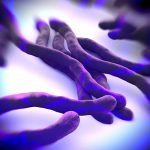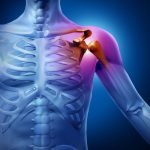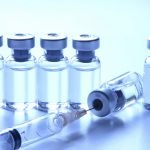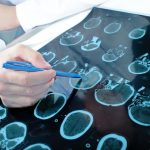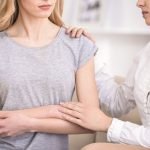Mindful Healing Spirit: Interview with Cathy Rogers, ND
Mark Swanson, ND
I’m absolutely thrilled that Dr Cathy Rogers graciously accepted to be my interview guest for this particular issue of NDNR. Dr Rogers has been a modern naturopathic pioneer and a true “who’s who” in naturopathic medicine. She was instrumental in the early growth and success of Bastyr University, a founding director of the AANP, and a player in developing the profession as it has evolved today. Now, with over 30 years in private practice, she has helped change the lives of countless patients with her healing work. In Dr Rogers’ practice, her keen intuitive ability and grounding in the science and art of interactive emotional regulation come together to help her clients heal the mind to heal the body. This places her specialty squarely within the foundations of natural medicine. Her expertise is a demonstration of a steadfast adherence to naturopathic medicine’s core principles.
Dr Rogers, what is your educational background, current position, and professional specialty?
I have a BA from the University of Washington – a self-styled degree I called “Social Change in Health Care” – a mix of psychology and philosophy. In 1976, I graduated from National College of Naturopathic Medicine in Seattle. In the early days of practice, I attended home births and did women’s health care. In the 1980s and ‘90s I was practicing and was also involved in the development of the profession. I had a healing hydrotherapy spa on Puget Sound for 14 years through 2013.
I love depth work and my practice specialty is body-based psychotherapy and trauma treatment. I have had training in somatic psychotherapy EMDR (Eye Movement Desensitization and Reprocessing) – a cutting-edge trauma therapy.1* I have studied interpersonal neurobiology and other brain-based psychotherapy processes intensively for the past 20 years.
We go back to Bastyr University’s early growth period. I was a student (1980-1984) and you were a faculty member. You were also a mentor to me and many naturopathic students. Can you share one of your more memorable experiences?
I came to Bastyr in 1981 as Dean of Admissions, and in 1983 I became Academic Dean, responsible for the development and supervision of the academic program and clinical services. At that time, a small team of folks responsible for the various “departments” managed the college by a consensus process in weekly meetings. Early on, with only about 125 ND students enrolled in the entire college, we had the audacity to apply for academic accreditation for Bastyr’s medical program. The federal accrediting agency’s response was to make a new rule, applying only to Bastyr, to no longer accredit single-degree colleges. We went public with their discriminatory action in a contested political and legal battle, and won. Bastyr became the first naturopathic college to achieve full federal accreditation. The icing on the cake for our relentless efforts was the same federal accrediting agency’s executive director later joining the board of the Council of Naturopathic Medicine; he became a great guidance to the profession. In the midst of all this, I also focused on pulling together a second-degree program in nutrition and served as president of the AANP. I loved participating in that period of Bastyr’s early history.
You’ve previously summarized 3 decades of practice with the following observations:
The powerful agency of the therapeutic relationship for healing
Experience in discovering and engaging patients’ healing resources
Removing obstacles to the flow of self-healing power
Co-regulating dysregulated states to restore vitality and health
Fostering sensory experiences of well-being and self-knowing awareness through nature-cure practices
Witnessing patients’ spontaneous healing insights during therapeutic bathing
These show incredible insights! Please feel free to elaborate on each.
I’d be happy to… I’ve thought deep and long about these over my professional career. I’ll start with the first…
The powerful agency of the therapeutic relationship for healing
As NDs, we are trained to diagnose the patient and apply the rich and varied techniques of naturopathic medicine: nutritional medicine, herbal treatments, bodywork, hydrotherapy, homeopathy, and many more. Our intention behind the remedies we apply is to stimulate the patient’s own self-healing power. It is ultimately patients’ self-knowing awareness, embodiment of self-compassion, and good enough self-care that moves them toward wholeness.
If we are working with lifestyle approaches, we are in the realm of habit change, and we need to awaken awareness to rigid, automatic behaviors of mind and body, and offer a felt experience of the new choice. Verbal instructions in new behaviors don’t get to the survival part of the brain where these habits are stored; it requires a sensory connection and practice.
So, the present-moment interactions between the partners in a healing relationship create this relational field where we can engage the Vis directly. We do this subtle and transformative work through close observation, sensitive attunement, mindfulness of our own internal state, and inviting conscious awareness particularly of the nonverbal expressions of the patient. The physician’s creation of a safe-enough space for this revelatory process is the “holding environment.”
By allowing one’s own and inviting the patient’s curiosity about body sensation, facial expression, posture, gesture, tone of voice, movements, and the like, one enters the psycho-emotional-physiological flow beneath conscious awareness. Bringing the movements of this flow to the patient’s awareness, and attuning to it, can calm the nervous system of both parties. This connection invites reflection, insight, understanding, self-compassion, and, ultimately, self-acceptance – which paradoxically allows changes in behavior.
To “get” a patient to “choose” to eat a healthy diet, I invited small groups of patients – 6-12 people – to join me in an experiment. In this exploration of “feeling well,” it was clear that it was their choice to participate (no food police). I emphasized a nonjudgmental approach. We did a symptom checklist to have a baseline of symptoms from the prior month, and followed a basic anti-inflammatory, low-allergen, food-based cleansing diet. I showed them how to dry-brush the skin and demonstrated contrast showers to support the organs of cleansing. This simple series never failed to produce significant increases in patients’ energy and reductions in symptoms of poor GI function, disturbed sleep, anxiety, body pain, and the like.
The group setting is, for me, most conducive to facilitating lifestyle change. The shared, mutually supportive experience creates a great container for powerful changes in bodily symptoms, a spirited approach to self-care, and practice in making healthy choices in the present moment.
I’ll discuss the next 3 together:
Experience in discovering and engaging patients’ healing resources
Removing obstacles to the flow of self-healing power
Co-regulating dysregulated states to restore vitality and health
After a heart attack, Mary, a nurse practitioner in her 50s who had attended my lifestyle change groups, came in with her husband to learn what she might do with her diet and lifestyle to promote her healing.
When I asked her to tell me what happened, she launched into an excited narrative about being alone midway up a long flight of stairs, feeling pain down her left arm, not having her cell phone, and so on. I interrupted her story and asked her to notice the sensations in her body as she was speaking. She reported constriction in her chest, some pain down her arm, shallow breathing, and a good deal of fear. I noticed the speedy, clipped nature of her speech, a worried look on her face, a tightening grip on her husband’s hand, as well as a faster pace and shallowness in my own breathing.
I invited her to set aside her judgment and be curious about her sensations, to listen to her body as a caring witness, to give space to her felt experience. Her breathing calmed and we began a conversation about this state itself and when she experienced it. She easily identified it as her reaction as a kid to her father’s critical, demanding way – and mentioned that something close to this state is fairly typical for her in her primary-care practice and with the addict population she serves.
Though diet and the correct supplements for her condition would be important for her healing, our body-based work together allowed her more: to be acutely aware of when she moved into a state of autonomic hyperarousal, and to use her resources to calm the nervous system. This way she began to build new neural networks in her brain toward better self-regulation. This allowed better blood circulation to her heart and an empowered sense of flexible control of her body’s automatic stress response. Part of the “resting state” of her ongoing stress was her belief and internal sense that she had to be perfect and always know what to do.
I helped her identify images, sensations, physical environments, or thoughts that are calming and comfortably energizing to her. We experimented with using resources she selected to move away from the stress symptoms and into a sensory experience of well-being. This gave her an anchor to ratify a somatic sense of safety and calm, and to return to that sensation when she begins to feel the shift back to stress and rigidity.
There needs to be a safe-enough, regulated autonomic state in the patient and physician for this process to be fruitful. And the patient’s using “resourcing” as a regular practice helps to develop the new response to stress.
The last 2 I’ll discuss together also:
Fostering sensory experiences of well-being and self-knowing awareness through nature-cure practices
Witnessing patients’ spontaneous healing insights during therapeutic bathing
In 1999, on a small inlet of Puget Sound on the Kitsap Peninsula, I brought into being my long-time dream of a healing spa – Chico Water Cure Spa – to offer attended therapeutic bathing. The attended bath was a 3-hour sequence including dry-brushing the skin; 2 rounds of heating (sauna, then herbal steam), each followed by a brisk plunge in the cold Sound. After that, the client entered a warm salts/seaweed/herbal bath in a clawfoot tub outdoors overlooking Dye’s Inlet and Mount Rainier. Then followed rest in the open air, swaddled or nude in the sun; or indoors by the fire, depending on weather. The intention of this experience in the vibrancy of Nature was to offer patients an embodied, memorable experience of well-being and to engage and support the expression of their inherent self-healing power.
For example, as Gail, an MD, said, as she pressed her back up against the cedar boards of the hot sauna, her body hunched over her sunken chest, “I never get warm enough to sweat.” When I came in with another cool cloth for her head, her brow and belly were dripping wet. Moving her shoulders back, she blurted out, “It’s not that I can’t get warm; it’s that I can’t open up.” She made use of that potent insight for months. I didn’t need to say a thing, other than smile and lead her to the rocky beach for her plunge in the Sound. In the intimate surround of the spa, I paid close attention to a guest’s body and rhythms, and witnessed the power of Nature and of water to evoke healing. I loved that work.
You’ve described your practice specialty as being a paradigm shift in clinical work. Tell us more about that.
I’m saying there’s a paradigm shift in clinical work overall that recognizes the primacy of emotional processes in human experience, and the new paradigm requires clinical expertise in empathy, intuition, affect regulation, and body-based awareness. The brief takeaway is that it is essential to master “the key mechanism of how to be with the patient, especially during affectively stressful moments.”2
What is meant by “attachment” in the context of your medical practice?
I was blown away when I first encountered the study of attachment, particularly because of how intimately it relates to 2 naturopathic principles: Find the cause, and Treat the person, not the disease.
The mammalian part of our nervous system – the limbic system – enables social interactions to calm our physiology and to support health, growth, and restoration. A person who is facially expressive and has vocal intonation and whose eyes are open when we talk to them, allows us to feel seen, heard and connected.
Through non-verbal, body-based attunement, misattunement, and reattunement, the parent-infant couple generates development of right-brain structures involved in processing emotion, modulating stress, and co-regulating the developing central and autonomic nervous systems. So, our ability with good-enough mothering to soothe ourselves in the presence of stress is determined before the second year of life. (Wow!) Not that it can never change, but changing our relating style doesn’t happen easily or automatically.
How does this apply to infant brain development regarding future attachment behavior?
An attachment behavior style begins in infancy. It arises from the individual’s experience of the relationship with a primary caregiver. It is individualized to each primary caregiver, and it can be secure or insecure. Secure attachment is a sense of well-being that comes from predictable, repeated experiences of care that create a secure base, allowing the child to explore. Insecure attachment can be avoidant, anxious, or disorganized. The insecure styles have certain ways of being in relationship that may be problematic, and disorganized attachment which arises out of continual misattunement, including early abuse and neglect, has serious health consequences, even 50 years later.
In the Adverse Childhood Experiences Study (ACE Study),3 17 000 study subjects were given a standardized physical exam and a 10-question survey which asked about early abuse, neglect, and household dysfunction. Researchers looked at how childhood experiences influence neurodevelopment, the adoption of health risk behaviors, and risk factors for preventable disease.
The results revealed that experiences of early childhood trauma deeply affect the nervous system and one’s ability to self-regulate. Children who have suffered these experiences are at greater risk for substance abuse, chronic mental and physical health problems, and early death. For example, with an ACE score of 6 (of 10), the person is 30 times more likely to commit suicide. Even a score of 4 can double one’s risk of cancer.3
Thank you! You’ve eloquently shown through experience and example how naturopathic doctors can be more encompassing to the healing process.
I believe that however we practice, the sensibility and practice of “being with” the patient makes use of the circuit of social connection in a way that moves things along toward healing.
Naturopathic medicine recognizes the spiritual aspect of healing in basing our practice on the individual’s inherent self-healing capacity. For me, the Vis Medicatrix Naturae is one’s vital impulse to express, to be oneself, to move toward wholeness. As important as it is to understand the pathophysiology of a person’s symptoms and offer useful remedies, we have an opportunity to hold and prize the person before us, and to interact with them in a way that communicates acceptance and loving kindness. This in itself is healing.
This is mind-blowing stuff and so enlightening! Thank you for awakening the healing spirit.
*“Although there is ongoing controversy about certain aspects of EMDR, especially the contribution of the eye movement component to treatment outcome, its efficacy in treatment of PTSD is now beyond doubt (van Etten & Taylor, 1998; Shepherd et al. 2000; Davidson & Parker, 2001; Bradley et al. 2005; National Collaborating Centre for Mental Health, 2005).” (Seidler GH, 2006)1
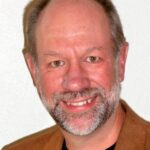 Mark Swanson, ND, writes “The Expert Report” column, which is featured in NDNR. Dr. Swanson has over 25 years experience as chief medical advisor, research and technical consultant, and products formulations expert to leading practitioner brand supplement manufacturers. He is a former associate editor for the American Journal of Naturopathic Medicine, national product director, and published researcher. He is a pioneer graduate of Bastyr University, 1984. Dr. Swanson has his private practice specializing in Preventics Care and Functional Medicine, in Sequim, Washington. Contact: [email protected]
Mark Swanson, ND, writes “The Expert Report” column, which is featured in NDNR. Dr. Swanson has over 25 years experience as chief medical advisor, research and technical consultant, and products formulations expert to leading practitioner brand supplement manufacturers. He is a former associate editor for the American Journal of Naturopathic Medicine, national product director, and published researcher. He is a pioneer graduate of Bastyr University, 1984. Dr. Swanson has his private practice specializing in Preventics Care and Functional Medicine, in Sequim, Washington. Contact: [email protected]
References:
- Seidler GH, Wagner FE. Comparing the efficacy of EMDR and trauma-focused cognitive-behavioral therapy in the treatment of PTSD: a meta-analytic study. Psychol Med. 2006;36(11):1515-1522.
- Schore JR, Schore AN. Modern Attachment Theory: The Central Role of Affect Regulation in Development and Treatment. Clin Soc Work J. 2008;36:9-20.
- Filetti VJ, Anda RF, Nordenberg D, et al. Relationship of childhood abuse and household dysfunction to many of the leading causes of death in adults: The Adverse Childhood Experiences Study (ACE Study). Am J Prev Med. 1998;14(4):245-258.




